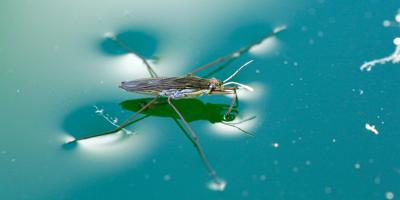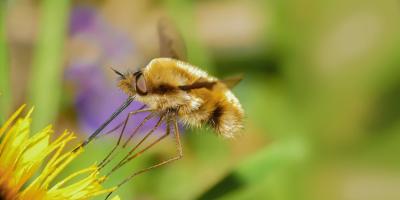7 Facts About The House Centipede

Chances are, at one point or another you’ve seen a centipede scurrying across your floors. Centipedes are classified as arthropods, meaning they are invertebrate animals with both an exoskeleton and a segmented body. Centipedes have a set of legs for every segment of their body, so the longer the centipede, the more legs they have. The largest of these insects have up to 300 sets of legs! While their appearance may creep you out, these insects don’t pose any threats to humans.
Check out these little-known facts about the house centipede:
- They Groom Themselves
Centipedes are pretty clean, as far as insects go. After each meal, they carefully clean their legs by dragging their mouth forcipules over the length of every one of their legs. - They’re Nocturnal Hunters
There is a reason you always find centipedes while searching for a midnight snack in the kitchen: Centipedes are nocturnal hunters. They hunt their prey -- which includes soft-bodied insects and spiders — by sneaking up behind their target and leaping on it, or by using their back legs to “lasso” their victims. - They Can Regrow Lost Legs
Believe it or not, centipedes have the capacity to regenerate lost legs. This is a useful ability, as when they are stuck in the mouth of a predator, such as a bird, they can often escape by leaving a few legs behind. If you notice a centipede with a few legs that are shorter than the others, it is likely recovering from an attack. - They Can Become Dehydrated
A few lost legs aren’t a big deal in the world of a centipede, but loss of water is. These insects are especially prone to dehydration, which is why they love dark, damp environments, such as under leaf piles or in damp, rotting wood. - They Can Reach Speeds of 16” Per Second
Yes, you read that right: The house centipede can travel well over a foot in a mere second. That’s pretty impressive considering that on average, centipedes are only 1.2 inches long. A centipede’s body is built for speed, suspended in a cradle between long and agile legs. - They Won’t Hurt You
While centipedes do have fangs, they are delicate little insects that cannot puncture human skin. If they do, against all odds, happen to bite you, it is said to feel similar to a small bee sting. About the worst thing centipedes can do to you is trigger an allergic reaction. And if you have a fear of spiders, you may start to consider the house centipede a friend. They feast on flies, cockroaches, moths, bed bugs, and spiders, along with a range of other common household pests. - They Are Considered Pets in Japan
Not only are centipedes harmless, but in some parts of the world like Japan, they are actually beloved pets, known as “Gejigeji.” Centipedes can grow to impressively large sizes in captivity.
Visit our Pest Library for even more information about the house centipede.
JP Pest Services is dedicated to solving residential and commercial pest problems throughout New England. Our service professionals understand the specific requirements to keep homes and businesses free of unwanted pests. Request a free residential estimate or a free commercial consultation today for pest solutions and programs tailored to your specific needs.



